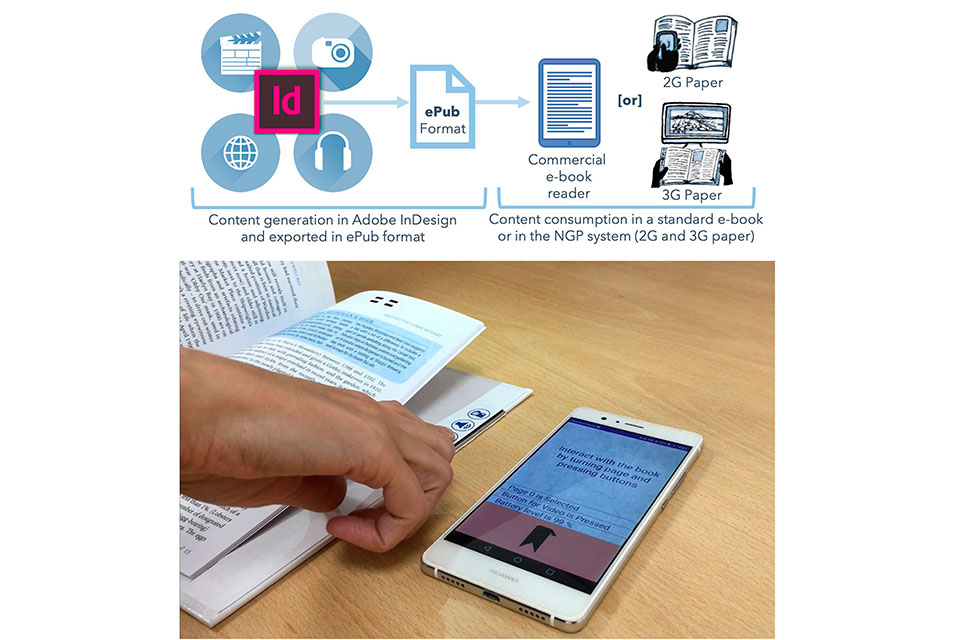GUILDFORD.- Augmented reality might allow printed books to make a comeback against the e-book trend, according to researchers from the
University of Surrey.
Surrey has introduced the third generation (3G) version of its Next Generation Paper (NGP) project, allowing the reader to consume information on the printed paper and screen side by side.
Dr. Radu Sporea, senior lecturer at the Advanced Technology Institute (ATI), comments:
"The way we consume literature has changed over time with so many more options than just paper books. Multiple electronic solutions currently exist, including e-readers and smart devices, but no hybrid solution which is sustainable on a commercial scale.
"Augmented books, or a-books, can be the future of many book genres, from travel and tourism to education. This technology exists to assist the reader in a deeper understanding of the written topic and get more through digital means without ruining the experience of reading a paper book."
Power efficiency and pre-printed conductive paper are some of the new features which allow Surrey's augmented books to now be manufactured on a semi-industrial scale. With no wiring visible to the reader, Surrey's augmented reality books allow users to trigger digital content with a simple gesture (such as a swipe of a finger or turn of a page), which will then be displayed on a nearby device.
George Bairaktaris, postgraduate researcher at the University of Surrey and part of the Next Generation Paper project team, said:
"The original research was carried out to enrich travel experiences by creating augmented travel guides. This upgraded 3G model allows for the possibility of using augmented books for different areas such as education. In addition, the new model disturbs the reader less by automatically recognizing the open page and triggering the multimedia content."
"What started as an augmented book project, evolved further into scalable user interfaces. The techniques and knowledge from the project led us into exploring organic materials and printing techniques to fabricate scalable sensors for interfaces beyond the a-book."
More information on the upgraded 3G augmented reality book appears in IEEE Pervasive Computing.









